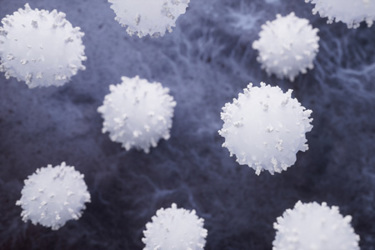Challenges In Manufacturing TIL For Clinical Trials
By Liang Li, Resilient Collective

On February 16, 2024, the U.S. FDA approved the first tumor-infiltrating lymphocyte (TIL) cell therapy drug.1 This breakthrough offers a treatment option for patients with unresectable or metastatic melanoma.2 Unlike CAR-T therapy, which is primarily used for blood cancers, TIL therapy is designed to target solid tumors. While this advancement holds great promise, manufacturing TIL therapy for clinical trials comes with several challenges. This article explores key obstacles and potential solutions in the manufacturing process.
Challenges In Manufacturing Timelines And Processes
The time required to manufacture TIL cell therapy varies widely, ranging from three weeks to several months, depending on whether the TILs are modified or unmodified.3 In comparison, CAR-T therapy has a more predictable timeline of about two to three weeks. The fundamental difference between TIL and CAR-T therapy lies in the way T cells are collected and processed. For TIL therapy, T cells are extracted directly from a patient’s solid tumor, requiring a complex process that involves tumor digestion, fragmentation, suspension, stimulation, and expansion. In contrast, CAR-T therapy collects T cells through apheresis, followed by modification, stimulation, and expansion.
Several factors can delay the manufacturing process, but there are strategies to mitigate these risks:
- Quality of tumor samples: If the tumor sample is too small or necrotic, the number of viable lymphocytes may be insufficient. Optimizing tumor resection techniques and selecting patients with a high tumor burden can help ensure an adequate number of functional TILs.3
- Cell expansion: A clinical dose of TIL therapy requires more than 10^9 cells.4 Cytokine cocktails (such as IL-2) and feeder cells (γ-irradiated PBMC feeders) are used to promote TIL proliferation.5
- Contamination risks: Maintaining sterility is critical during tumor resection and manufacturing. GMP-grade facilities and automated, closed systems help minimize human error and contamination risks.
- Supply chain constraints: TIL therapy is patient-specific, making manufacturing dependent on GMP facility capacity and the availability of essential supplies like culture media and IL-2. Decentralizing TIL production may help overcome these challenges.
The Role Of Cryopreservation And Its Impact On TIL Function
Cryopreservation is an essential step in the TIL manufacturing process, allowing cells to be stored and transported before infusion.6 However, it introduces several challenges:
- Cell viability and recovery: Freezing and thawing can damage cells, leading to reduced viability. Using cryoprotectants like dimethyl sulfoxide, along with controlled-rate freezing and rapid thawing techniques, helps maintain cell integrity.
- Proliferation capacity: Cryopreserved TILs often show diminished expansion potential. Cytokines like IL-2 can be used to restore their growth ability.
- Fresh tumor tissue preservation: If TIL manufacturing is not done on-site, cryopreserving tumor samples may be necessary to maintain cell viability.
Studies have shown that cryopreservation does not significantly impact TIL viability, function, or efficacy:
- Both fresh and thawed TIL samples maintain viability above 86%.7
- A clinical study found that cryopreserved TIL therapy achieved a 38% objective response rate (ORR) in patients with advanced metastatic melanoma who had previously received anti-PD-1 treatment.8
- Research on rectal cancer tumors comparing fresh and cryopreserved samples found stable recovery of key TIL subsets, including CD4+ and CD8+ cytotoxic T lymphocytes (CTLs), γδ T cells, and mucosal-associated invariant T cells (MAIT cells).9
Standardizing Release Criteria vs. Individualized TIL Assessments
To ensure safety and efficacy, TIL manufacturing involves both in-process testing and final lot release testing.10 Standardized criteria include:
- In-process testing: sterility, tumor-specific T cell activation, viability, and cell count10
- Lot release testing: mycoplasma detection, contamination checks, purity, identity, viability, tumor-specific T cell activation, and endotoxin levels10
Key analytical methods used for quality control include:
- Flow cytometry: This is used to confirm TIL identity through markers like CD45, CD3, CD4, and CD8. A sample is considered acceptable if more than 90% of cells are CD45+ CD3+.10
- Endotoxin and purity testing: The Endosafe test ensures that endotoxin levels are within acceptable limits.10
- Cytotoxic potency assay: The IFN-γ ELISA assay measures tumor-specific T cell activation, requiring a minimum threshold of >200 pg/ml.10 Additional potency markers like LAMP (CD107a) expression are also assessed.11
While standardized testing is crucial, individualized assessments remain necessary. TIL therapy is an autologous treatment, meaning each patient’s product is unique in composition and potency. For example, single TIL doses can range from 7.5 x 10^9 to 72 x 10^9 cells, and TIL products vary in CD4/CD8 ratios and exhaustion markers.4 Because of this variability, each TIL batch needs to be evaluated on a case-by-case basis.
Regulatory Hurdles For TIL Therapies
Compared to CAR-T therapy, TIL therapy faces unique regulatory challenges due to its patient-specific nature, complex production process, and lack of genetic modification. Some key regulatory issues include:
- Patient-specific variability: Since each batch is derived from an individual’s tumor, cell yields, expansion rates, and phenotypic characteristics can vary significantly. CAR-T therapies, in contrast, involve genetically modified T cells from a more standardized starting population.
- Potency and efficacy measurement: Unlike CAR-T therapy, which targets well-defined antigens like CD19, TIL therapy relies on natural tumor reactivity, which differs among patients. Each TIL batch requires a personalized potency assay.
- Manufacturing consistency and scalability: The variability in tumor biopsies makes standardizing TIL production more challenging. Additionally, cell expansion takes weeks to months, whereas CAR-T manufacturing is faster due to its reliance on peripheral blood-derived cells.
- Long-term safety and efficacy data: TIL persistence in the body is less predictable, necessitating long-term patient follow-ups to meet regulatory requirements.12
To address these regulatory hurdles, several strategies can be implemented:
- Develop and standardize reliable potency assays, such as IFN-γ ELISA, to meet regulatory expectations.
- Optimize cryopreservation techniques to ensure consistent TIL quality and function.
- Use AI-driven biomarker analysis to improve patient selection and predict TIL efficacy.
- Engage with regulatory agencies early to establish clear criteria for product release and clinical endpoints.
Conclusion
TIL cell therapy represents a significant advancement in treating solid tumors. However, its success depends on overcoming challenges related to manufacturing timelines, cryopreservation, product consistency, and regulatory approval. As research and technology continue to evolve, innovative solutions will help streamline the TIL manufacturing process, bringing this promising therapy to more patients in need.
References:
- Carmen C. First Cancer TIL Therapy Gets FDA Approval for Advanced Melanoma.
- Pancholi N J. TIL Therapy: A New Melanoma Treatment 30 Years in the Making.
- Warner A B, Corrie P G, Hamid O. Tumor-Infiltrating Lymphocyte Therapy in Melanoma: Facts to the Future. Clin Cancer Res. 2022 Dec 9;29(10):1835–1854.
- https://www.fda.gov/media/176417/download?attachment
- Forget M-A, Malu S, Liu H et al. Activation and propagation of tumor infiltrating lymphocytes on clinical-grade designer artificial antigen presenting cells for adoptive immunotherapy of melanoma. J Immunother. 2014 Nov-Dec;37(9):448–460.
- https://www.iovance.com/manufacturing/
- https://www.iovance.com/uploads/LION16701_Frank_POSTER3_final-005.pdf
- Sarnaik A A, Khushalani N I, Chesney J A et al. Safety and efficacy of cryopreserved autologous tumor infiltrating lymphocyte therapy (LN-144, lifileucel) in advanced metastatic melanoma patients who progressed on multiple prior therapies including anti-PD-1. Journal of Clinical Oncology. 2019 May; 37(15_suppl):2518-2518
- Liang F, Rezapour A, Falk P et al. Cryopreservation of Whole Tumor Biopsies from Rectal Cancer Patients Enable Phenotypic and In Vitro Functional Evaluation of Tumor-Infiltrating T Cells. Cancers (Basel). 2021 May 17;13(10):2428.
- Hopewell E, Cox C, Thomas S P et al. Tumor Infiltrating Lymphocytes Streamlining a Complex Manufacturing Process. Cytotherapy. 2018 Dec 1;21(3):307–314.
- Gokuldass A, Blaskovich M A, Kopits I et al. Redirected Lysis Assay as an Effi cient Potency Assay to Assess TILs for Immunotherapy. Lion Biotechnologies.
- Chesney J, Lewis K D, Kluger H et al. Efficacy and safety of lifileucel, a one-time autologous tumor-infiltrating lymphocyte (TIL) cell therapy, in patients with advanced melanoma after progression on immune checkpoint inhibitors and targeted therapies: pooled analysis of consecutive cohorts of the C-144-01 study. Immune cell therapies and immune cell engineering. Volume 10, Issue 12.
 About The Author:
About The Author:
Liang Li, Ph.D., is an independent consultant with the Resilient Collective group who focuses on cell therapy development. He received his Ph.D. in pharmacy and biomolecular science from the University of Brighton and an MBA from the University of Nottingham. Contact him on LinkedIn.
